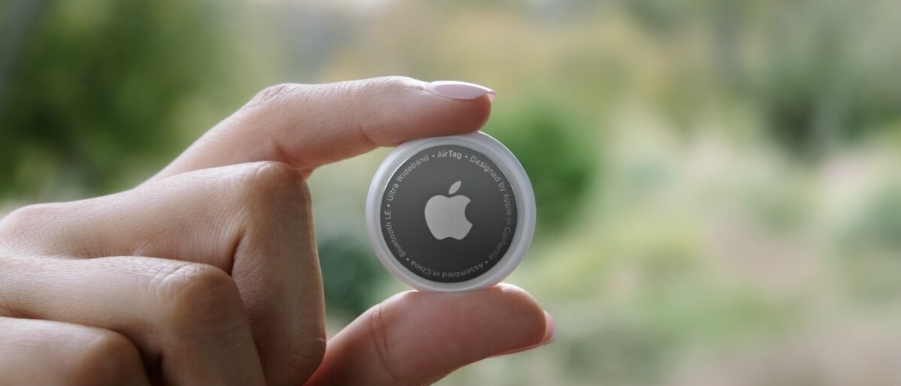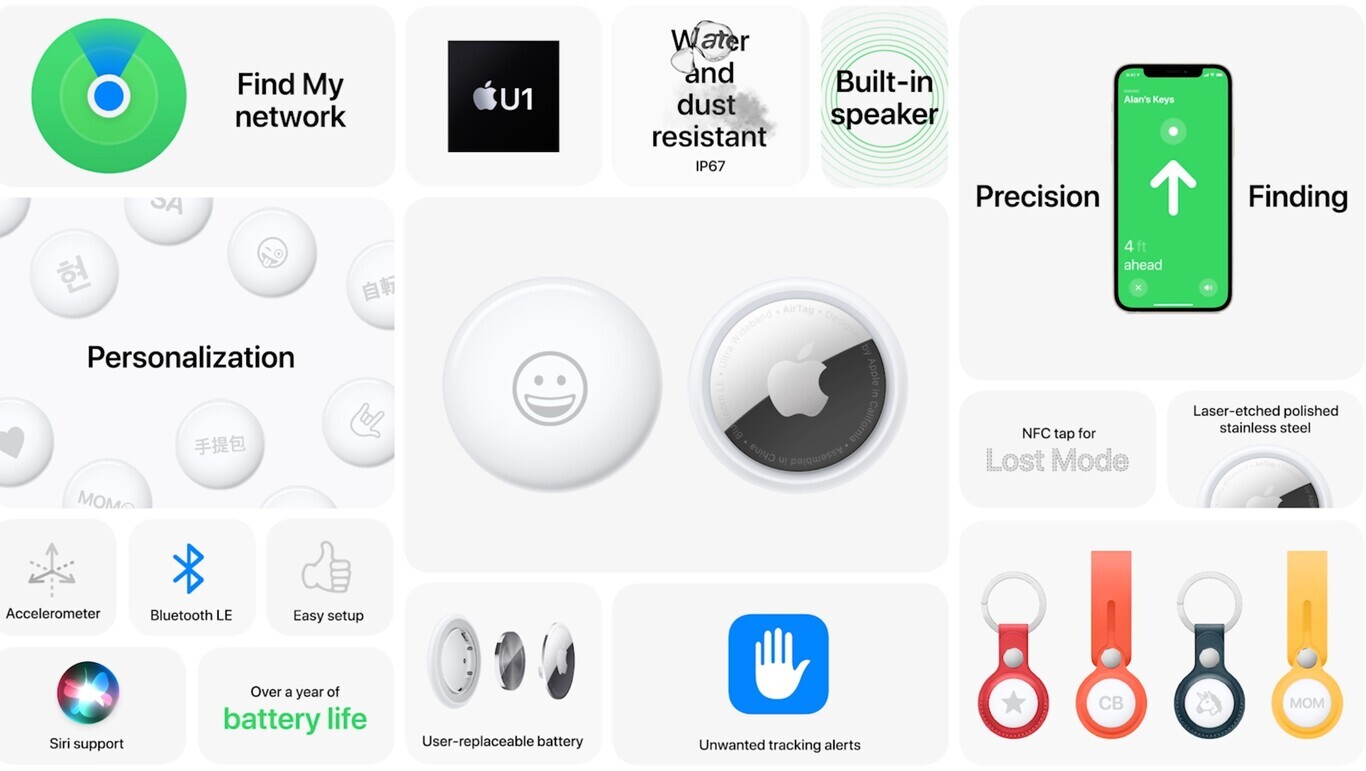
We are going to explain what Apple AirTags are and how they work, something for which we will have to tell you how the ultra-broadband or UWB technology they use to be located by your phone works. To do this, we will start by talking about AirTags, and then we will go on to describe your technology in a simple and simplified way.
In short, they are a kind of beacon to find the objects you want. It works with devices with the U1 chip, which are from the iPhone 11 onwards, phones that will be able to locate where this little device is located, so if you link it by saying that you have put it on your keys, you will always be able to locate where you have the keys. But let’s explain it a little better.
What are AirTags

Apple AirTags is a tracking device. They come to be a kind of coin with internal technology that allows your iPhone or other compatible devices to locate where they are. The idea is that you can put these devices in valuables such as house keys or your bag so that if you forget where they are, you can find them instantly.
Apple currently has an app called Find Me on its devices with which you can know where the others that you have linked to the same account are. For example, from your Mac, you will be able to know where the iPhone is at all times, something useful if you think you have lost it, and to know exactly where you have left it.
But these devices that you can find are small computers with great internal technology. What about the rest of the non-intelligent objects that you can lose? From a bicycle to your house keys, through your bag, school bag, or even your car or umbrella, the answer to joining Apple’s location ecosystem is AirTags.
These devices are designed to locate objects, not people. To do this, they use a technology called ultra-wideband, or UWB, and an Apple U1 chip that powers this precise search technology. Location information is sent in encrypted form to maintain privacy.
The idea is the following. You attach the AirTags to an object (you have keychains to do it), and you link it to your iPhone 11 or 12. You will then be able to configure which object you have attached, and then the object will appear inside the Find My app, from where you can see your current or last known location on a map.
In addition to this, if you are close enough to the AirTag for it to come within Bluetooth coverage range, you can also use the app to make it emit a small sound with which you can locate it. You know, if you’ve left your keys under a sofa cushion, you’ll be able to find them.
In addition to this, AirTags are waterproof, being able to submerge up to one meter for 30 minutes. Its battery lasts about a year, and it uses a button cell so it’s easy to change. In addition, it has an NFC chip so that if you find a lost item with AirTag, you can scan it with your iPhone or Android mobile and see who it belongs to.
Of course, you should know that you must activate the lost mode of the AirTag so that if another person finds it when scanning it with their mobile, your phone number and the message that you decide to establish will appear.
How ultra-broadband technology works

The world of smart devices has a plethora of technologies for connecting devices wirelessly, from NFC for proximity to Bluetooth for distance. But not all are new technologies, and some manufacturers such as Samsung, Sony, Xiaomi, or Apple are trying to give new life to the veteran ultra-wideband or ultra-wideband, also known by its acronym, UWB.
This technology had been almost forgotten for nearly two decades, and now it is being re-implemented with a very ambitious goal: to succeed in replacing Bluetooth. Whether or not it is achieved will depend on how the devices evolve.
Ultra-wideband or UWB is called the set of frequencies that use a bandwidth greater than 500 MHz, and there may be connections that can use several GHz simultaneously. This means that they have a very large bandwidth, a greater highway to transmit the data.
To give you an idea, let’s compare it with Bluetooth, which has 40 channels of 2 MHz each. Therefore, the bandwidth of the UWB is much higher, which makes it possible to transmit data at a much higher speed. In concrete numbers, Bluetooth 5.0 can transmit data at 2 Mbps, while ultra-wideband can do it at 1.6 Gbps at a short distance, and 110 Mbps at about 10 meters away.
And as they explain in Xataka Móvil, even under conditions of minimal connectivity, UWB can transmit up to 27Mbps, approximately 14 times faster than Bluetooth. Therefore, the benefits to send data faster are undeniable.
Another of the benefits of UWB is that it has a margin of error of 10 centimeters when it comes to locating objects, a precision much greater than the margin of one meter of Bluetooth. This is so because they calculate the distance by measuring the time of flight of the signal to the receiver, and can also have a precision of 3 degrees.
In addition to this, UWB has a greater capacity to pass through materials, something that improves coverage, and generates less radio interference. It is also more energy efficient, making it a perfect technology for devices like AirTags.

Sharlene Meriel is an avid gamer with a knack for technology. He has been writing about the latest technologies for the past 5 years. His contribution in technology journalism has been noteworthy. He is also a day trader with interest in the Forex market.











